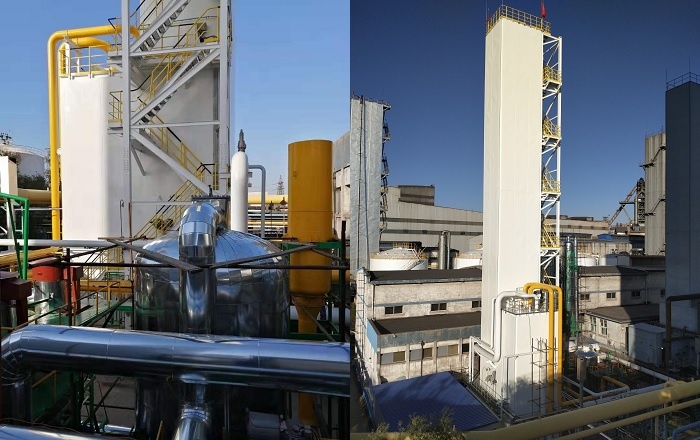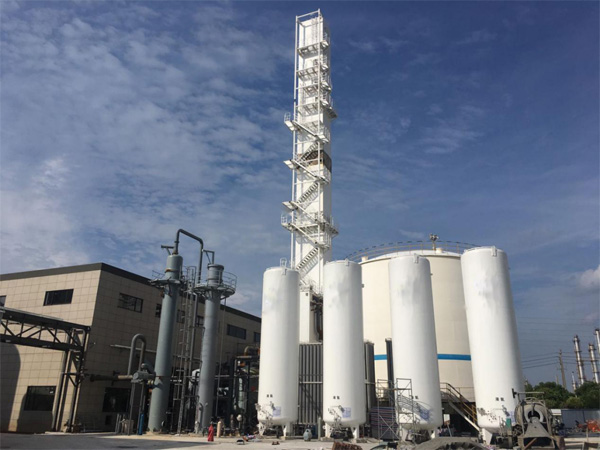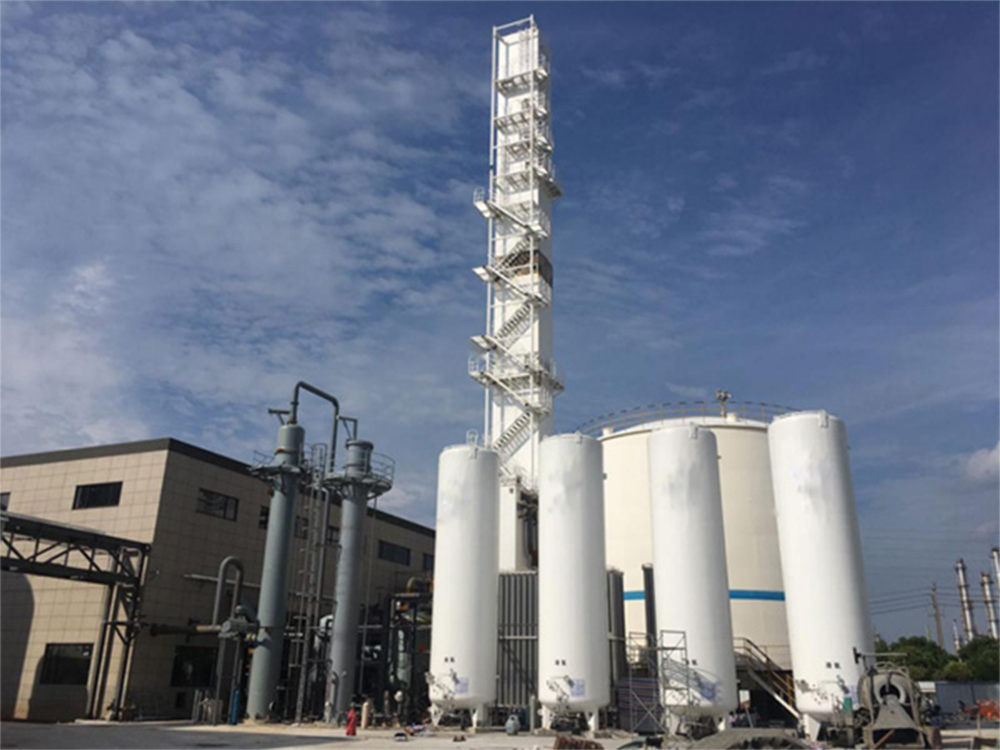
Liquid Air Separation Unit
Oxygen-rich liquid air is fed to the upper column. Waste nitrogen from the top of the upper column is reheated in the supercooler and main heat exchanger before leaving the cold box as regeneration gas for molecular sieve desorption. Product liquid oxygen is extracted from the bottom of the upper column. This process requires significant cooling capacity, typically provided by a circulating compressor and warm and cryogenic temperature expanders.
The unit typically includes self-cleaning air filters, air compressors, air pre-cooling systems, molecular sieve purification systems, high and low temperature expanders, recirculating compressors, fractionation column systems, residual liquid evaporators and back-up systems.
• Widely used in petroleum, chemical, power generation, metallurgy, paper, light industry, pharmaceutical, food, shipbuilding and other industries.
• This advanced and mature process enables long continuous operation, high liquefaction rates and low energy consumption.
• Long cycle molecular sieve cleaning system reduces valve cycling.
• Air-cooled tower, water-cooled tower or cryogenic freezer for raw air cooling, reducing capital cost.
• Fraction column uses standard packing materials.
• High efficiency recirculating compressor for energy savings and reduced consumption.
• DCS (Distributed Control System) for advanced process control.
• High and low temperature pressurised turboexpanders maximise heat exchange potential, increasing cooling and liquefaction capacity.

•Remote monitoring system for enhanced operational control.
•Professional service team to provide long-term management, training guidance and regular follow-up for users.
•LifenGas aims to be a leader in industrial energy conservation and environmental protection, helping companies reduce costs and improve sustainability.

























































